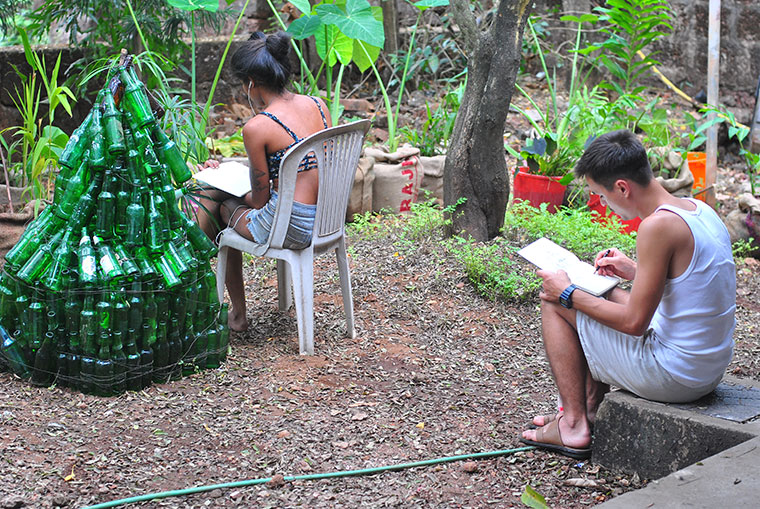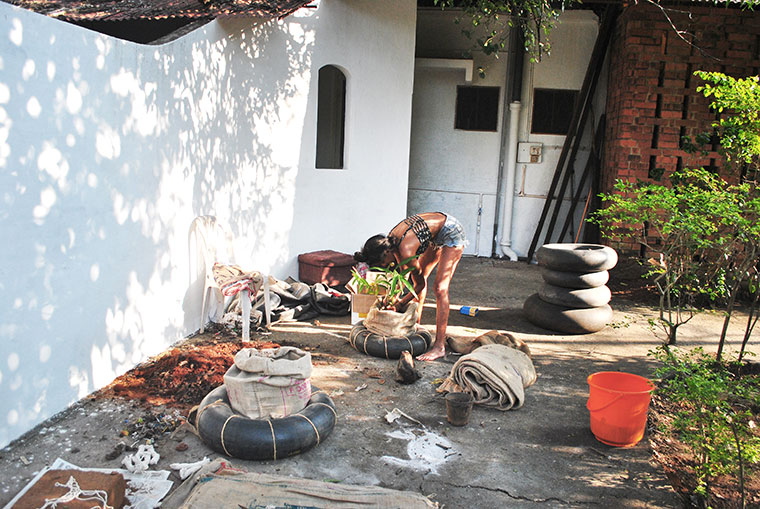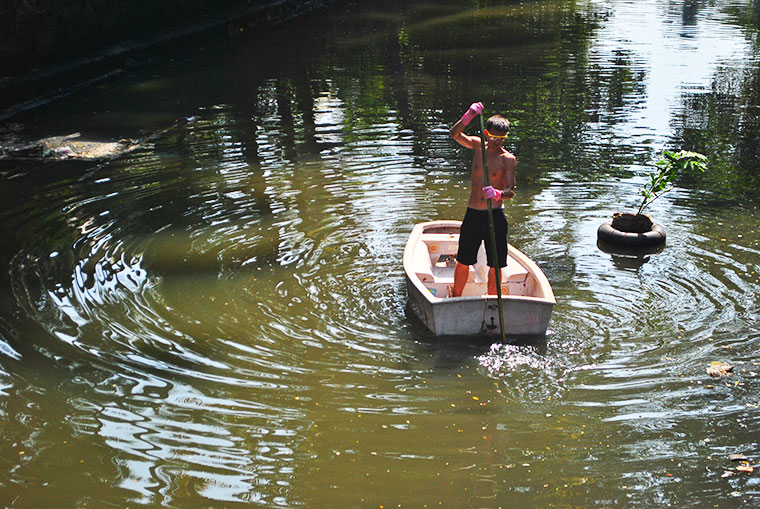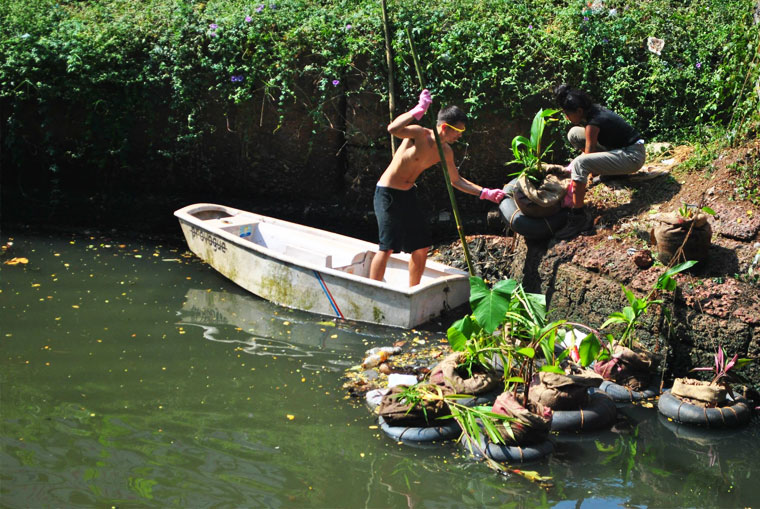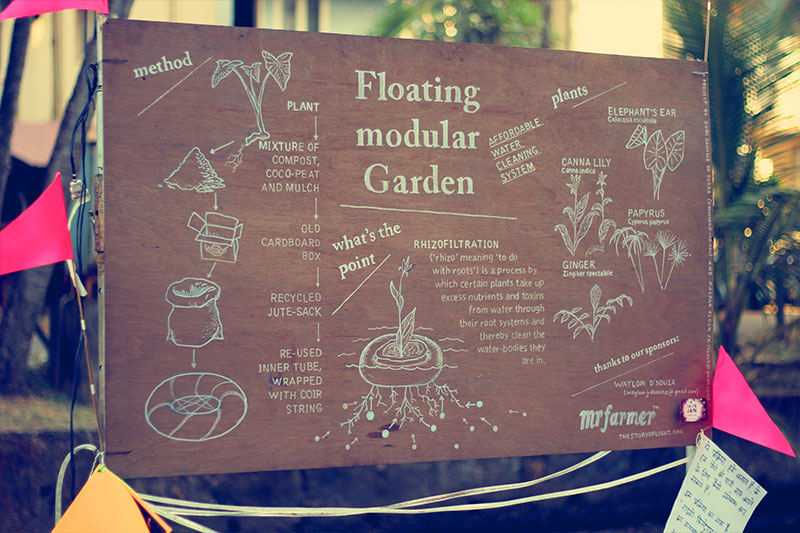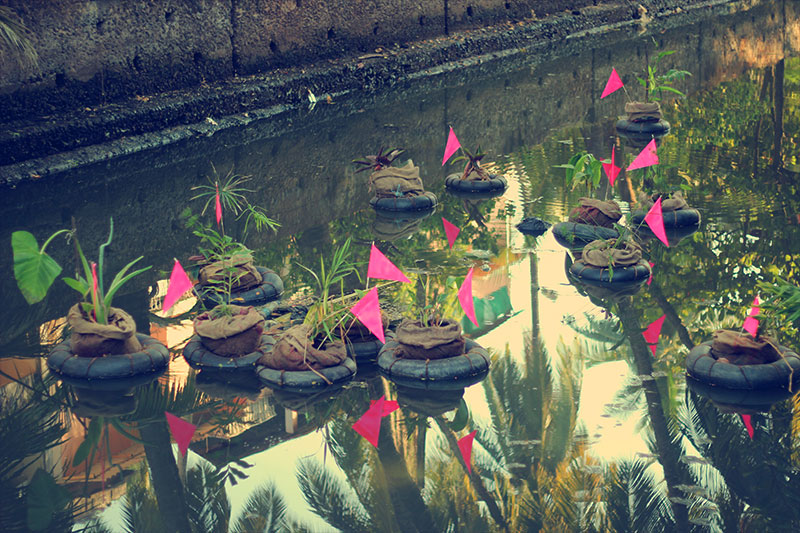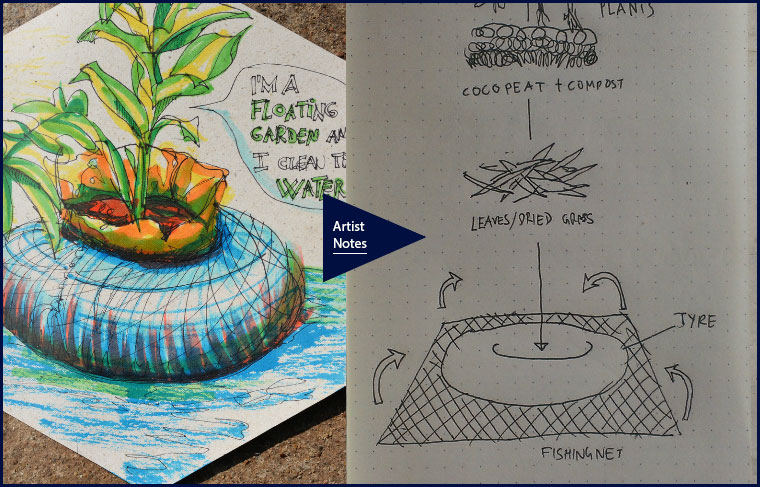Floating Flower Garden
ABOUT THE INSTALLATION
Floating Flower Garden is a plant-based system to purify the heavily polluted water of St.Inez Creek in Panjim. Our site is next to Vivanta by Taj off the main promenade. The artists are creating a set of 30 floating garden-modules built out of locally-sourced materials.
The installation explores how plants harness the sun’s energy in the most fascinating and innovative ways, in this case, to clean water!
The function of each garden is very simple: over time the plants grow a root-system through the loose fabric of the jute-sacks into the water, and start pulling heavy metals and other polluting substances out of the creek; they then give back purified, clean water. This process is called rhizofiltration–rhizo relating to ‘root’ or ‘roots’.
Local plants have been chosen to clean the water and establish a wetland within the creek once more. The species used include Canna Indica, Colocasia Esculanta, Papyrus and ginger. Each garden-module is composed of the following materials only: inner tubes of car and truck tires; jute sacks; coconut coir rope; recycled cardboard boxes; coco-peat; compost and, of course, the plants!
One module can be reproduced for approximately 300 INR. It was important for the artists to create a system than can be reproduced in a simple and cost-effective way.
ABOUT THE ARTISTS
Zuri Camille De Souza finished her BA in Human Ecology and Spatial Design at College of the Atlantic in Maine. She has worked on permaculture projects in the US, Occupied Palestine, Italy and India. Currently, she is part of the visiting faculty at ISDI Parsons, Mumbai, teaching Visual Anthropology and Communication Design History. She is also a freelance graphic designer and landscaper.
Contact: zdesouza@coa.edu
Kaspar Fluck grew up in Switzerland, where he studied Graphic-Design at the school of visual arts in Biel. He graduated in 2009. The following years he spent time travelling the globe, working as a free artist with the main focus of painting, and discovering the true nature of consciousness through meditation. Today his main pursuit is his spiritual path, and the spontaneous expression of his creative nature in whatever way that will manifest.
KNOW MORE
Rhizofiltration (‘rhizo’ means ‘root’) is the adsorption or precipitation onto plant roots (or absorption into the roots) of contaminants that are in a solution surrounding the root zone. Rhizofiltration is similar to phytoextraction, but the plants are used to clean up contaminated groundwater rather than soil. The plants to be used for cleanup are raised in greenhouses with their roots in water. Contaminated water is either collected from a waste site and brought to the plants or the plants are planted in the contaminated area, where the roots then take up the water and the contaminants dissolved in it. As the roots become saturated with contaminants, they are harvested.
For example, sunflowers were successfully used to remove radioactive contaminants from pond water in a test at Chernobyl, Ukraine.
The contaminated water is either collected from a waste site and brought to the plants, or the plants are grown in the contaminated area, where the roots then take up the water and the contaminants dissolved in it. Many plant species naturally uptake heavy metals and excess nutrients for a variety of reasons. Some of these species are better than others and can accumulate extraordinary amounts of these contaminants.
Source: UNEP
